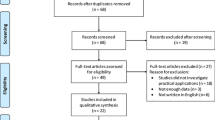Abstract.
The human sequential grouping that organizes parts of tones into a group was examined by the mismatch negativity (MMN), a component of event-related potentials that reveals the sensory memory process. The sequential grouping is accomplished by the combinations of some factors, e.g., temporal and frequency proximity principles. In this study, auditory oddball stimuli in which each of the stimuli consisted of series of tone bursts, were applied to the subjects, and the MMN elicited by the deviation of the frequency of the last tone in the stimulus was investigated. The relationship between the expected phenomena of sequential grouping of tones and observed magnitudes of MMN was evaluated. It was shown that the magnitudes of MMN changed according to the configuration (number of tones, frequency) of tone sequence to be stored. This result suggested that the sequential grouping of presented tones was achieved on the preattentive auditory sensory memory process. It was also shown that the relative change of MMN magnitudes corresponded to the conditions of sequential grouping, which had been proposed by the auditory psychophysical studies. The investigation of MMN properties could reveal the nature of auditory sequential grouping.
Similar content being viewed by others
References
Alho K (1995) Cerebral generators of mismatch negativity (MMN) and its magnetic counterpart (MMNm) elicited by sound change. Ear Hear 16:38–51
Baumann U (2000) Identification and segmentation of multiple auditory objects. In: Auditory worlds: sensory analysis and perception in animals and man. Wiley-VCH, Weinheim, Germany, pp 274–278
Bregman AS (1990) Auditory scene analysis. MIT Press, Cambridge, MA
Darwin CJ (1997) Auditory grouping. Trends Cogn Sci 1(9):327–333
Kanoh S, Itoh T, Kazami K, Futami R, Hoshimiya N (1996) A study on mismatch response to a change in tone duration by EEG and MEG. Jpn J Med Electron Biol Eng 34(4):128–136
Kanoh S, Arai T, Futami R, Hoshimiya N (2001) Properties of auditory temporal integration revealed by mismatch negativity. In: Proceedings of the 23rd annual IEEE EMBS international conference, 2.7.3.4
Näätänen R (1992) Attention and brain function. Erlbaum, Hillsdale, NJ
Näätänen R, Tervaniemi M, Sussman E, Paavilainen P, Winkler I (2001) ‘Primitive intelligence’ in the auditory cortex. Trends Neurosci 24(5):283–288
Schröger E, Paavilainen P, Näätänen R (1994) Mismatch negativity to changes in a continuous tone with regularly varying frequencies. Electroencephalogr Clin Neurophysiol 92:140–147
Schröger E, Tervaniemi M, Wolff C, Näätänen R (1996) Preattentive periodicity detection in auditory patterns as governed by time and intensity information. Cogn Brain Res 4:145–148
Shinozaki N, Yabe H, Sato Y, Sutoh T, Hiruma T, Nashida T, Kaneko S (2000) Mismatch negativity (MMN) reveals sound grouping in the human brain. Neuroreport 11:1597–1601
Sussman E, Ritter W, Vaughan HG Jr (1998) Predictability of stimulus deviance and the mismatch negativity. Neuroreport 9:4167–4170
Sussman E, Ritter W, Vaughan GH Jr (1999) An investigation of the auditory streaming effect using event-related brain potentials. Psychophysiology 36:22–34
Tervaniemi M, Saarinen J, Paavilainen P, Danilova N, Näätänen R (1994) Temporal integration of auditory information in sensory memory as reflected by the mismatch negativity. Biol Psychol 38:157–167
Tiitinen H, May P, Reinikainen K, Näätänen R (1994) Attentive novelty detection in humans is governed by pre-attentive sensory memory. Nature 372:90–92
Winkler I, Schröger E (1995) Neural representation for the temporal structure of sound patterns. Neuroreport 6:690–694
Winkler I, Czigler I, Jaramillo M, Paavilainen P, Näätänen R (1998) Temporal constraints of auditory event synthesis: evidence from ERP. Neuroreport 9:495–499
Winkler I, Schröger E, Cowan N (2001) The role of large-scale memory organization in the mismatch negativity event-related brain potential. J Cogn Neurosci 13(1):59–71
Yabe H, Tervaniemi M, Reinikainen K, Näätänen R (1997) Temporal window of integration revealed by MMN to sound omission. Neuroreport 8:1971–1974
Author information
Authors and Affiliations
Corresponding author
Additional information
This study was approved by the Ethics Committee on Clinical Investigation, Graduate School of Engineering, Tohoku University and was carried out in accordance with the policy of the Declaration of Helsinki.
Rights and permissions
About this article
Cite this article
Kanoh, S., Futami, R. & Hoshimiya, N. Sequential grouping of tone sequence as reflected by the mismatch negativity. Biol. Cybern. 91, 388–395 (2004). https://doi.org/10.1007/s00422-004-0521-3
Received:
Accepted:
Published:
Issue Date:
DOI: https://doi.org/10.1007/s00422-004-0521-3




